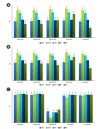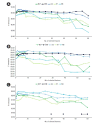Cardiopulmonary resuscitation of infants at birth: predictable or unpredictable?
- PMID: 36102005
- PMCID: PMC9475154
- DOI: 10.4266/acc.2021.01501
Cardiopulmonary resuscitation of infants at birth: predictable or unpredictable?
Abstract
Background: Anticipating the need for at-birth cardiopulmonary resuscitation (CPR) in neonates is very important and complex. Timely identification and rapid CPR for neonates in the delivery room significantly reduce mortality and other neurological disabilities. The aim of this study was to create a prediction system for identifying the need for at-birth CPR in neonates based on Machine Learning (ML) algorithms.
Methods: In this study, 3,882 neonatal medical records were retrospectively reviewed. A total of 60 risk factors was extracted, and five ML algorithms of J48, Naïve Bayesian, multilayer perceptron, support vector machine (SVM), and random forest were compared to predict the need for at-birth CPR in neonates. Two types of resuscitation were considered: basic and advanced CPR. Using five feature selection algorithms, features were ranked based on importance, and important risk factors were identified using the ML algorithms.
Results: To predict the need for at-birth CPR in neonates, SVM using all risk factors reached 88.43% accuracy and F-measure of 88.4%, while J48 using only the four first important features reached 90.89% accuracy and F-measure of 90.9%. The most important risk factors were gestational age, delivery type, presentation, and mother's addiction.
Conclusions: The proposed system can be useful in predicting the need for CPR in neonates in the delivery room.
Keywords: cardiopulmonary resuscitation; data mining; feature selection; neonatal resuscitation; supervised learning.
Conflict of interest statement
No potential conflict of interest relevant to this article was reported.
Figures






References
-
- World Health Organization . Guidelines on basic newborn resuscitation. Geneva: World Health Organization; 2012. - PubMed
Grants and funding
LinkOut - more resources
Full Text Sources

